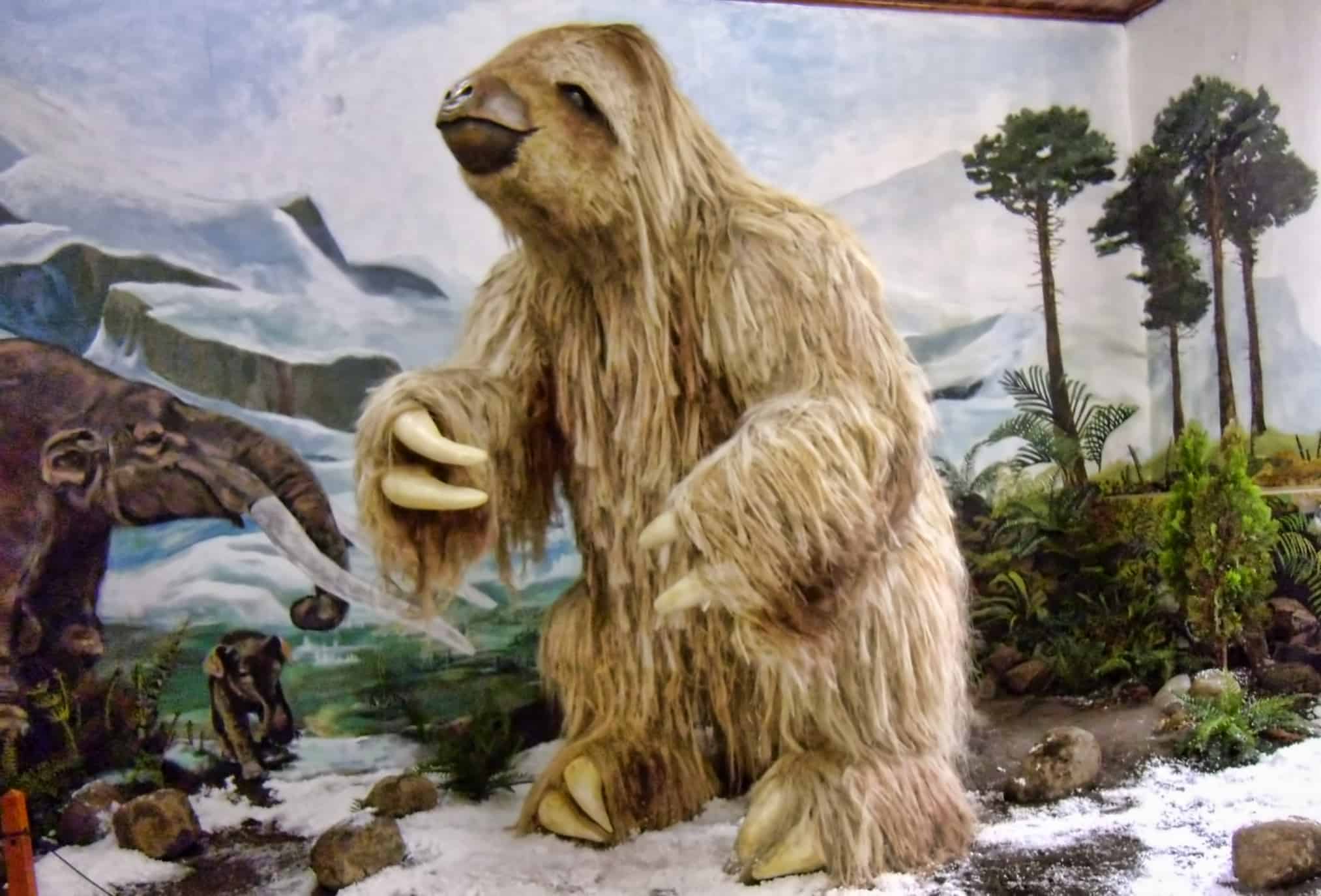In the movie “Jurassic Park,” prehistoric animals roam Costa Rica. It’s exciting, but it’s fiction.
In the Museum of San Ramón, likenesses of prehistoric animals can be viewed in poses that resurrect an ice age from 12,000 years go. The models are based on real bones found in the San Ramón and Palmares areas.
The most striking display is a scene from the Pleistocene Era involving a massive sloth. It was created by biologist Liz Brenes and artist Andres Badillo, both of whom work on the University of Costa Rica’s San Ramón campus.
Entering the exhibit hall, one is amazed and a little frightened to confront this giant creature set in a rocky, chilling landscape. Add a mural background with snowcapped mountains and an array of big bichos (vermin), set the air conditioning to cool, and you get the idea of what Costa Rica was like all those years ago.
Giant sloths and their contemporaries roamed large swaths of South and Central America, and the specimen on display, at just 9 feet tall, is a shrimp. After all, it had to fit in the room. Giant ground sloths often grew up to 15 feet tall. Not much is known about their diet, Brenes says, but they most likely ate leaves and maybe acorns. No natural predators are known, but it’s possible that other animals ate sloth babies, controlling their population.
The exhibit, called Megafauna, offers a window into the scientific discoveries that have been documented in the area. Several giant bones were unearthed in 1934 by San Ramón botanist Alberto Manuel Brenes in a riverbed in Piedades Sur de San Ramón. Later, the bones were identified as Eremotherium laurillardi (giant sloth) and a Mixotoxodon larensis, a rhinoceros-type animal. The bones were given to the National Museum, where they stayed until more bones were found in Palmares following a flood in 2006.
The exhibit features the work of naturalist Brenes, says biologist Brenes, and is a demonstration of how climate change affects plants and animals. When the ice age receded and the tropics warmed, many large mammals disappeared.
After months of research on ice age conditions, Brenes teamed with sculptor Badilla and designer Roger Ruíz to build the exhibit. Badilla did much of the work at his home, with help from his wife, artist Susana Villalobos. Eight huge blocks of dense Styrofoam form the body, which was done piecemeal to get it through doors and trucked to the museum.
The hair, ranging from less than 3 centimeters in length for the face to almost a meter for the body, is cabuya – rope made from plant fibers. The sloth required 500 meters of it, untwisted and combed, then stapled to the body. Fifteen thousand staples were used. Then the pieces were transported to the museum to be combined to form the giant sloth. A mural painted by Villalobos behind the scene completes the illusion.
The city of San Ramón, about 30 miles west of San José on the Inter-American Highway, has a history of literary and cultural achievements and is pleasant place to visit. The Museum of San Ramón, on the Central Park and diagonal from the cathedral, is open Tues.-Sat. from 10 a.m.-6 p.m. and is free.

